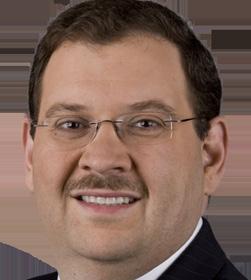
3 minute read
Telepsychiatry
Muhamad Aly Rifai, MD, FAPA, FAPM, FACLP Professor of Medicine and Psychiatry, Geisinger Commonwealth School of Medicine. Immediate Past President, Lehigh Valley Psychiatric Society
An Update on Telepsychiatry
Advertisement
Telepsychiatry is defined as the provision of psychiatric services to patients through communication means such as private video conferencing and telephone exchange. Over the past fifteen years, government and state agencies slowly adopted policies to approve the use of telepsychiatry to provide psychiatric services to patients living in underserved and rural areas. Despite overwhelming published peer-reviewed evidence of the effectiveness of telepsychiatry in improving overall morbidity, mortality, and disease-specific outcomes of patients, the use of telepsychiatry services remained restricted to certain demographics and those living in underserved and rural areas.
In April 2014, I wrote an article in the Pennsylvania Psychiatrist about telepsychiatry and called for its wide implementation because it provided increased access to services and has shown improved outcomes. It was not until February 2020 and because of the Coronavirus Disease 2019 (COVID-19) pandemic that government and state agencies as well as private insurers speedily approved the wide adoption of telepsychiatry services to provide psychiatric services to all patients in the US who are under a stay at home order because of the social distancing guidelines. Additionally, most restrictions on the provision of telepsychiatry services were lifted by executive orders. For billing and reimbursement purposes private video conferencing telepsychiatry services were also equated with telephone-only telepsychiatry services. In addition to relaxing the billing and reimbursement rules and regulations, government and state agencies also relaxed the privacy guidelines allowing to use communication methods that may not have overall privacy protections. For example, the use of Apple FaceTime, Zoom and Skype were approved despite the lack of any privacy measures that are compliant with the Health Information Portability and Accountability Act (HIPAA) of 1996.
For those psychiatrist colleagues who had not been involved in the practice of telepsychiatry this speedy and abrupt change in the practice of psychiatry took some getting used to. And while there is an adjustment for both patients and psychiatrists, many immediately started seeing the value of utilizing new technology to streamline psychiatric services more efficiently and safely. For most patients, they saw a reduction in travel times and enjoyed using time off from work for things other than attending medical appointments. Face contact with their psychiatrist, as well as the implementation of electronic prescribing has impressed them because of the ease and convenience of telepsychiatry. It is very possible that the majority of our patients would not prefer to go back to traditional appointments, and would rebel (as I have been told by many of my patients) against insurers and government agencies if asked to return things to their pre- COVID-19 state.
It is quite interesting that voluminous evidence-based peer-reviewed research on the utility of telepsychiatry gained boosted momentum. Old research on telephone-administered behavioral therapy had already showed that the outcome was the same as to face-to-face therapy. It was at the behest of a letter from the Medical Director of the American Psychiatric Association and other medical specialty organizations that government and state agencies decided to reverse course and accept telephonic contact as an equivalent to video conferencing contact in terms of efficacy and reimbursement. Nonetheless, for patients with severe psychiatric illness and those dealing with extreme issues such as suicidal ideation, telepsychiatry may have made things more difficult. And there is significant worry that access to in person face-to-face services may be curtailed once the COVID-19 pandemic subsides.
Despite the psychiatric burden that the COVID-19 pandemic has afflicted many of our patients in terms of anxiety, depression, loneliness, despair, and psychiatric decompensation there is a developing greater sense of community in person or virtually. Even though people are socially distancing and not attending in person worship services, bowling leagues or baseball games people are really trying to connect virtually. And while our patients can talk from the comfort of their living rooms, there are some challenges with patients wanting to keep their psychiatric issues private and away from their families.
Telepsychiatry is here to stay, patients are demanding it. It is quite exciting that we may be able to reach more people to broaden our outreach and improve access all coupled with well-known improved outcomes. Many patient advocacy groups have started their efforts to ask government and state agencies as well as private insurers to make some or all of the telepsychiatry changes permanent. It is our hope that our psychiatrist colleagues will support those efforts and adopt their practice to the new reality of virtual care through telepsychiatry. It is quite important that those colleagues with familiarity in Telepsychiatry share that experience and assist other colleagues.







